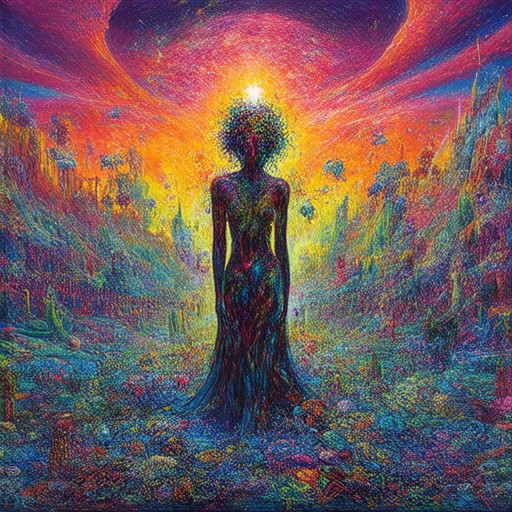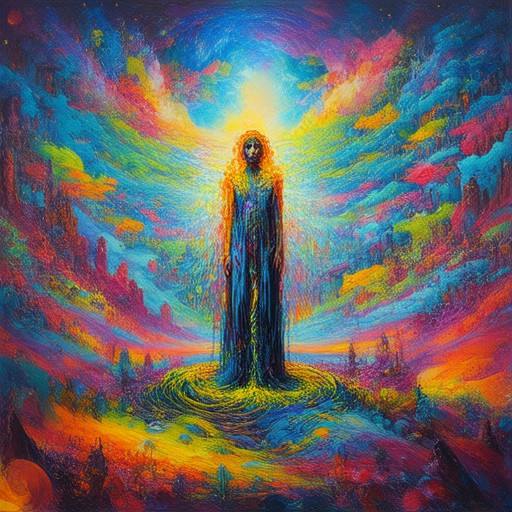Exploring the transformative power of art skills development, this comprehensive guide delves into the essential skills and stages every individual must master, from early childhood to professional practice. Art skills development is not merely about creating beautiful artwork—it fosters creativity, enhances motor skills, and cultivates emotional intelligence, making it a cornerstone of holistic education. Whether you’re an aspiring artist, a parent seeking to nurture your child’s talents, or an educator looking to enrich your curriculum, this guide offers invaluable insights and practical strategies to unlock and refine your artistic potential. By understanding the stages of child art development, mastering essential art skills, and accessing resources for professional growth, you can embark on a journey that celebrates creativity and empowers individuals at every level. From exploring the milestones of early art development to discovering tools for improving art skills, this guide serves as your ultimate roadmap to igniting and nurturing creative potential.

What Skills Does Art Develop?
Engaging in art fosters a variety of essential skills that extend beyond the creative process itself:
- Confidence Building: Through self-expression and creation, individuals gain self-assurance, learning to trust their instincts and present their unique perspectives.
- Emotional Expression: Art provides a medium for exploring and communicating complex emotions, fostering empathy and understanding of oneself and others.
- Problem-Solving Ability: Artists encounter challenges that require innovative thinking and resourcefulness, honing their critical thinking and adaptability skills.
- Creativity Enhancement: Regular engagement in art stimulates imagination, encouraging divergent thinking and the development of novel ideas.
- Perspective Taking: Artistic creation often involves viewing subjects from varied viewpoints, cultivating a broader and more nuanced understanding of the world.
- Communication Skills: Sharing artistic interpretations enhances verbal and non-verbal communication abilities, whether through descriptions or body language during creation.
What Are the Three Stages of Art Skill Development?
- Early Exploration: This stage involves experimenting with various art forms and techniques to discover personal preferences and strengths. Artists often begin by exploring different mediums like drawing, painting, sculpture, or digital art. This phase is about finding inspiration and developing a unique artistic style through trial and error.
- Developing Technique: Once an artist has a clearer idea of their direction, they focus on honing their technical skills. This includes mastering tools, materials, and artistic techniques. Regular practice, studying the works of master artists, and seeking feedback from peers or teachers are common approaches during this stage.
- Mastery and Innovation: Achieving mastery requires consistent dedication and experimentation. Artists push their boundaries, exploring new styles, perspectives, and mediums. This stage is marked by confidence in their abilities and a willingness to take creative risks, often leading to groundbreaking work.

What is the best way to improve art skills?
To enhance your artistic abilities, consider the following structured approach:
- Set Clear Goals : Define what you aim to achieve with your art. Whether it’s mastering a particular technique or developing a unique style, having objectives keeps you focused.
- Consistent Practice : Regular practice is essential. Dedicate time daily to create, even if it’s just for 15 minutes. Consistency helps reinforce muscle memory and improves creativity over time.
- Study Masterpieces : Analyze works by artists you admire. Look at their techniques, color choices, and composition methods. This study can inspire new ideas and approaches.
- Experiment with Materials : Explore different mediums, tools, and surfaces. Trying new things allows you to discover what works best for your artistic expression.
- Seek Feedback : Share your work with peers or mentors. Constructive criticism can provide valuable insights and help identify areas for improvement.
- Join Art Communities : Participate in local art groups or online forums. Collaborating with others and learning from their experiences can accelerate your growth.
- Document Progress : Keep a portfolio or journal to track your journey. This documentation helps visualize improvements and motivates continued effort.
- Stay Inspired : Explore galleries, museums, and nature for inspiration. Surrounding yourself with beauty and creativity fuels your artistic spirit.
- Take Classes or Workshops : Enroll in courses to gain structured knowledge and techniques. This can also connect you with fellow learners who share your passion.
- Be Patient and Persistent : Improvement takes time. Celebrate small victories and remain committed to your craft.
By following these steps, you can develop your art skills effectively while staying motivated and inspired. Remember, every stroke brings you closer to your artistic goals.

Should a 4-Year-Old Be Able to Draw?
Yes, a 4-year-old should absolutely be able to draw. At this age, children are developing their fine motor skills and creativity, making it the perfect time to explore artistic expression. With guidance and the right tools, they can create meaningful and recognizable artwork.
Developmental Milestones
- At 4 years old, children often show improved control over their drawing tools, allowing them to create more complex and detailed images.
- They may begin to draw recognizable shapes, characters, and scenes, often inspired by their surroundings or imagination.
- This stage is crucial for fostering creativity and spatial awareness, which are essential skills for future artistic development.
Tools and Materials
To support your child’s drawing abilities, consider providing:- Art supplies like crayons, markers, or watercolors.- Paper, cardstock, or canvas in various sizes.- Stencils or templates to guide their drawing process.- A comfortable space where they can experiment freely.
Tips for Parents
- Encourage playfulness in their drawing sessions.
- Let them lead the creation process, allowing for mistakes and spontaneous ideas.
- Provide positive reinforcement to build confidence.
- Explore art together as a family activity, fostering bonding and learning.
By nurturing their interest in drawing, you’re helping them develop a lifelong appreciation for art. Remember, every masterpiece is unique and reflects their individuality.
How Well Can a 5-Year-Old Draw?
A 5-year-old child’s drawing abilities are typically marked by significant progress in motor skills, color recognition, and imaginative expression. At this stage, children begin to demonstrate greater control over their drawings, often producing recognizable figures with distinct features like clothing and facial expressions.
Developmental Milestones
- Physical Skills: A 5-year-old gains better control over drawing tools, allowing for more precise lines and shapes. They often show improved coordination and spatial awareness.
- Creativity: Children at this age explore themes like animals, people, and imaginary creatures, often with a sense of narrative or humor in their artwork.
- Technical Ability: They can copy shapes like triangles and circles and may attempt to write simple letters and numbers, showing early literacy skills through imagery.
Tips for Encouraging Drawing Development
- Provide Art Supplies: Offer crayons, markers, or finger paints that are safe and age-appropriate. Consider kid-friendly tools like large-sized crayons or washable markers.
- Support Creative Expression: Let them experiment with different mediums and encourage storytelling through their drawings. Ask open-ended questions to spark imagination.
- Practice Regularly: Daily drawing sessions can improve fine motor skills and reinforce shape recognition. Simple activities like coloring books or free drawing on paper can be highly effective.
- Encourage Exploration: Allow them to explore textures, colors, and shapes without criticism. This fosters a love for art and helps develop problem-solving skills.
- Teach Shape Recognition: Use fun exercises like tracing shapes or matching them to pictures. This supports cognitive development alongside drawing abilities.
Competitor Mention
For additional resources and tips on fostering creativity in young children, visit Artful Journey . Explore their articles on artistic development and creative learning for kids.
Discover more ideas at Crayola and The Artful Parent , which offer age-specific art projects and parenting guides.
Remember, every child develops at their own pace. Encouraging and supporting their curiosity is key to nurturing their artistic talents!

What Milestones Should a 5-Year-Old Have?
A 5-year-old child is at a fascinating stage of development, marked by significant progress in various areas. Here are the key milestones to look for:
- Physical Development :
- Improved walking and running.
- Better balance and coordination, such as standing on one foot.
- Climbing stairs confidently.
- Increased strength and fine motor skills.
- Emotional Development :
- Greater understanding of emotions.
- Recognition of their own feelings and those of others.
- Beginnings of empathy and sharing behaviors.
- Development of a sense of fear and anxiety.
- Social Skills :
- Enhanced ability to share toys and play cooperatively.
- Growth in peer relationships and group play.
- Learning to take turns and communicate effectively.
- Increased use of imaginative play.
- Cognitive Development :
- Improved memory and attention span.
- Better problem-solving skills.
- Understanding of cause and effect.
- Ability to follow basic instructions.
- Language Development :
- Expansion of vocabulary and sentence complexity.
- Increased use of descriptive language.
- Ability to tell simple stories and ask questions.
- Understanding of basic grammar concepts.
- Creative Milestones :
- More realistic drawings and attempts at pattern creation.
- Interest in singing and imitating sounds.
- Growth in pretend play and role-playing abilities.
- Motor Skills :
- Improved control over movements.
- Better accuracy in throwing and catching objects.
- Mastery of riding a tricycle or bicycle.
- Problem-Solving Abilities :
- Solving simple problems independently.
- Understanding of spatial relationships.
- Exploration of cause-and-effect scenarios.
These milestones collectively reflect the rapid growth and development typical in a 5-year-old, contributing to their emotional, social, cognitive, and physical well-being.




0 Comments